|
Books Should Be Free Loyal Books Free Public Domain Audiobooks & eBook Downloads |
|
|
Books Should Be Free Loyal Books Free Public Domain Audiobooks & eBook Downloads |
|
Top Authors |
|---|
|
Book type:
Sort by:
|
By: Sir Arthur Conan Doyle (1859-1930) | |
|---|---|
 The Disappearance of Lady Frances Carfax
The Disappearance of Lady Frances Carfax
| |
 Visit to Three Fronts: June 1916
Visit to Three Fronts: June 1916
In the course of May 1916, the Italian authorities expressed a desire that some independent observer from Great Britain should visit their lines and report his impressions. It was at the time when our brave and capable allies had sustained a set-back in the Trentino owing to a sudden concentration of the Austrians, supported by very heavy artillery. I was asked to undertake this mission. In order to carry it out properly, I stipulated that I should be allowed to visit the British lines first, so that I might have some standard of comparison... | |
 The Great Boer War
The Great Boer War
| |
 Captain of the Polestar, and other tales
Captain of the Polestar, and other tales
This is a collection of early Sir Arthur Conan Doyle short stories. It includes stories of mystery, comedy, shipwrecks and fantasy. | |
 Danger! and Other Stories
Danger! and Other Stories
This is a volume of short stories by the famous Arthur Conan Doyle. | |
 My Friend The Murderer
My Friend The Murderer
| |
 Round the Red Lamp: Being Facts and Fancies of Medical Life
Round the Red Lamp: Being Facts and Fancies of Medical Life
This is a collection of short stories focussing on the problems that present themselves to physicians and surgeons in the course of their work. The volume is named "Round the Red Lamp" as a reference to the red lamps that marked general practitioner's offices in Arthur Conan Doyle's times. | |
 Beyond the City
Beyond the City
| |
 The Great Keinplatz Experiment and Other Tales of Twilight and the Unseen
The Great Keinplatz Experiment and Other Tales of Twilight and the Unseen
| |
 The War in South Africa Its Cause and Conduct
The War in South Africa Its Cause and Conduct
| |
 Green Flag and Other Stories of War and Sport
Green Flag and Other Stories of War and Sport
Arthur Conan Doyle was deeply affected by the many wars fought during his lifetime. As many other writers, he used the material for short stories, a collection of which is presented here. | |
 The Cabman's Story The Mysteries of a London 'Growler'
The Cabman's Story The Mysteries of a London 'Growler'
| |
 The Last of the Legions and Other Tales of Long Ago
The Last of the Legions and Other Tales of Long Ago
| |
 Desert Drama: Being the Tragedy Of The Korosko
Desert Drama: Being the Tragedy Of The Korosko
Also published under the title The Tragedy of the Korosko (1898). A group of European tourists are enjoying their trip to Egypt in the year 1895. They are sailing up the River Nile in a "a turtle-bottomed, round-bowed stern-wheeler", the Korosko. They intend to travel to Abousir at the southern frontier of Egypt, after which the Dervish country starts. They are attacked and abducted by a marauding band of Dervish warriors. The novel contains a strong defence of British Imperialism and in particular the Imperial project in North Africa. It also reveals the very great suspicion of Islam felt by many Europeans at the time. | |
 Through the Magic Door
Through the Magic Door
I care not how humble your bookshelf may be, nor how lowly the room which it adorns. Close the door of that room behind you, shut off with it all the cares of the outer world, plunge back into the soothing company of the great dead, and then you are through the magic portal into that fair land whither worry and vexation can follow you no more. You have left all that is vulgar and all that is sordid behind you. There stand your noble, silent comrades, waiting in their ranks. Pass your eye down their files... | |
 The Vital Message
The Vital Message
| |
 The Man from Archangel and Other Tales of Adventure
The Man from Archangel and Other Tales of Adventure
| |
 Rodney Stone
Rodney Stone
| |
 Stark Munro Letters
Stark Munro Letters
"The letters of my friend Mr. Stark Munro appear to me to form so connected a whole, and to give so plain an account of some of the troubles which a young man may be called upon to face right away at the outset of his career, that I have handed them over to the gentleman who is about to edit them. There are two of them, the fifth and the ninth, from which some excisions are necessary; but in the main I hope that they may be reproduced as they stand. I am sure that there is no privilege which my friend... | |
 Doings of Raffles Haw
Doings of Raffles Haw
The people of the small town of Tamfield are not used to exciting things happening. When millionaire Raffles Haw moves to town, rumors spread like wildfire about him. The advent of Mr. Haw, however, changes the town, and particularly the lives of the McIntyre family, in ways no one could ever have guessed. | |
 The New Revelation
The New Revelation
| |
 The Last Galley Impressions and Tales
The Last Galley Impressions and Tales
| |
 The Refugees
The Refugees
| |
 Songs of the Road
Songs of the Road
Although best known for the creation of the detective Sherlock Holmes, Arthur Conan Doyle did not only write works of mystery and of advenure - he was also a rather successful poet. This is a collection of poems written by the famous author. | |
 The Firm of Girdlestone
The Firm of Girdlestone
| |
 A Duet, with an Occasional Chorus
A Duet, with an Occasional Chorus
| |
 Songs of Action
Songs of Action
This is a collection of poems by Arthur Conan Doyle centering around the theme of war, action and adventure. | |
By: Henry Handel Richardson (1870-1946) | |
|---|---|
 The Getting of Wisdom
The Getting of Wisdom
The Getting of Wisdom tells the story of Laura Rambotham, a 12-year-old girl who is just starting at her boarding school. This is based on Henry Handel Richardson’s experiences of her own school, the Prebysterian Ladies College in central Melbourne. The story goes through her friends and enemies and all the life of a boarding school in early 20th century Australia, and all the subjects and learning too. Laura learns a lot but her education does not satisfy her, and her social life is thrown upon her as very different from her peers. | |
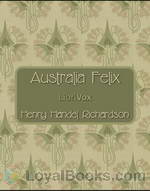 Australia Felix
Australia Felix
The story of Richard Mahony, a doctor trained in Edinburgh who comes to Ballarat in the gold rush of the 1850s. At first he runs a shop but later he marries and returns to medical practice. His story is interwoven with that of his wife’s brothers and sister. Even after his medical practice becomes successful he is still unhappy living in the colony and decides to return home to Britain. Richard is a restless irritable man whose character is said to be based on the author’s own father. This book is the first of the trilogy ‘The Fortunes of Richard Mahony’, but stands well on its own... | |
 Maurice Guest
Maurice Guest
| |
By: Thomas a Kempis (1380?-1471) | |
|---|---|
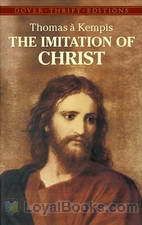 The Imitation of Christ
The Imitation of Christ
The Imitation of Christ is widely considered one of the greatest manuals of devotion in Christianity. The life of Christ is presented as the highest study possible to a mortal, as Jesus’ teachings far excel all the teachings of the saints. The book gives counsel to read the scriptures, statements about the uses of adversity, advice for submission to authority, warnings against temptation and how to resist it, reflections about death and the judgment, meditations upon the oblation of Christ, and admonitions to flee the vanities of the world. A recording of a Dutch translation of this work is also available (Thomas a Kempis was Dutch but wrote in Latin of course). | |
By: Anthony Hope (1863-1933) | |
|---|---|
 The Prisoner of Zenda
The Prisoner of Zenda
There's a handsome young man about town in London, whose unusual good looks hint about a scandalous ancestry. On a visit to a tiny East European principality, he decides to take a walk through a dense forest. He falls asleep under a tree and is discovered by the king and his entourage who are out hunting. Both are stunned by their startling resemblance to each other. The king who is days away from his grand coronation invites the Englishman back to his castle and here the visitor becomes embroiled in a sinister plot to overthrow the monarch and usurp the throne... | |
 Rupert of Hentzau
Rupert of Hentzau
This is the sequel to ‘The Prisoner of Zenda‘. Five years have passed. The King has become jealous of Rudolf Rassendyll and suspicious of the queen (Flavia)’s feelings towards him. Flavia decides that this must be the last year in which she sends to Rudolf the single red rose that betokens her love, and therefore she also sends via Fritz von Tarlenheim, her letter of good-bye. Count Rupert of Hentzau, banished from Ruritania after the incidents of the earlier book, is plotting his return. In furtherance of his scheme he obtains both letter and rose, and plots to place them before the King. Rudolf, Fritz and Sapt must prevent this at all costs… | |
 The King's Mirror
The King's Mirror
| |
 Simon Dale
Simon Dale
| |
 The Indiscretion of the Duchess
The Indiscretion of the Duchess
| |
 Half a Hero A Novel
Half a Hero A Novel
| |
 Frivolous Cupid
Frivolous Cupid
| |
 Dolly Dialogues
Dolly Dialogues
| |
 Captain Dieppe
Captain Dieppe
| |
 A Man of Mark
A Man of Mark
| |
 Tristram of Blent An Episode in the Story of an Ancient House
Tristram of Blent An Episode in the Story of an Ancient House
| |
 Father Stafford
Father Stafford
| |
 The Secret of the Tower
The Secret of the Tower
| |
 The Great Miss Driver
The Great Miss Driver
| |
 Helena's Path
Helena's Path
| |
 Quisanté
Quisanté
| |
By: H. G. Wells (1866-1946) | |
|---|---|
 The Time Machine
The Time Machine
A science fiction novel first published in 1895, The Time Machine was the first depiction of time travel, and the reason Wells consequently coined the term “time machine” which is now universally recognized. Furthermore it is considered to be one of the precursors to the science fiction genre and the Dying Earth subgenre. An undeniable classic, the novel offers a gripping plot, speculation, and an innovative portrayal of man’s hopes, fears, and human nature in general. The tale opens with the introduction of an English scientist and inventor, simply referred to as the Time Traveler, who hosts a dinner party for a number of guests... | |
By: Gaston Maspero (1846-1916) | |
|---|---|
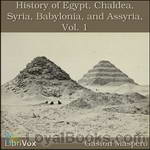 History Of Egypt, Chaldea, Syria, Babylonia, and Assyria
History Of Egypt, Chaldea, Syria, Babylonia, and Assyria
History Of Egypt, Chaldæa, Syria, Babylonia, and Assyria is the masterwork of one of the fathers of modern egyptology. This work, in twelve volumes, was translated from the French original, “Histoire ancienne des peuples de l’Orient classique” and published in 1903-1904. Maspero was a largely self-taught master of hieroglyphic translation. In November 1880, he was placed at the head of a French archeological mission, which developed later into the Institut Français d’Archéologie Orientale... | |
By: E.M. Berens | |
|---|---|
 Myths and Legends of Ancient Greece and Rome
Myths and Legends of Ancient Greece and Rome
Silver footed, fair haired Thetis, Ares the God of War, Nike the Goddess of Victory, The Furies and The Muses, Zeus the presiding deity of the Universe and the magical, mysterious Olympus, are some of the amazing, mythical Greek and Roman deities you'll encounter in this book. Myths and Legends of Ancient Greece and Rome by EM Berens was originally intended for young readers. Written in an easy and light style, the author attempts to bring the pantheon of gods into a comprehensible format.... | |
By: Marcus Aurelius (121-180) | |
|---|---|
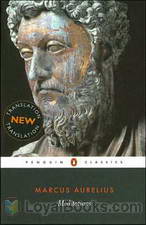 Meditations
Meditations
Marcus Aurelius was a Roman Emperor and philosopher who wrote Meditations; insights which were considered to give the meaning of life. The book was not written with the intent to be published. It offers a noteworthy chain of challenging situations which are a reflection on spirituality and enumerate the struggle to understand oneself and one's role in the universe. Written in the style of a journal, Meditations emphasizes that life in this world is short. Aurelius was a stoic philosopher who had influenced the thoughts of many leaders in his time... | |
By: Arthur Scott Bailey (1877-1949) | |
|---|---|
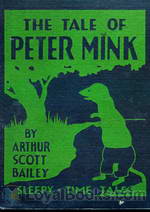 The Tale of Peter Mink
The Tale of Peter Mink
Arthur Scott Bailey (1877 – 1949) was author of more than forty children’s books. Bailey’s writing has been described thusly by the Newark Evening News: “Mr. Bailey centered all his plots in the animal, bird and insect worlds, weaving natural history into the stories in a way that won educator’s approval without arousing the suspicions of his young readers. He made it a habit to never ‘write down’ to children and frequently used words beyond the average juvenile vocabulary, believing that youngsters respond to the stimulus of the unfamiliar.” | |
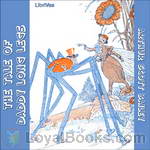 The Tale Of Daddy Long Legs
The Tale Of Daddy Long Legs
Summary text (Arthur Scott Bailey (1877 – 1949) was author of more than forty children’s books. He was born on November 15, 1877, in St. Albans, Vermont, United States, the second child of Winfield Scott Bailey and Harriet Sarah Goodhue. THERE was great excitement in the neighborhood of Farmer Green’s house. Rusty Wren had found some strange tracks. And nobody knew whose they were. Now, when they were puzzled like that the field- and forest-folk usually went straight to Mr. Crow for advice... | |
 The Tale of Timothy Turtle
The Tale of Timothy Turtle
One of Bailey’s “Sleepy-Time Tales,” this is the story of Timothy Turtle, a grumpy old turtle trying to live his life alongside Black Creek. Timothy’s adventures lead him to encounters with other Black Creek creatures, Fatty Coon, Mr. Crow, Brownie Beaver, Peter Mink, Ferdinand Frog, and even the local boy, Johnnie Green. | |
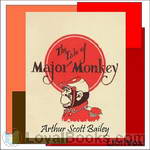 The Tale of Major Monkey
The Tale of Major Monkey
Arthur Scott Bailey was the author of more than forty children’s books.Mr. Bailey centered all his plots in the animal, bird and insect worlds, weaving natural history into the stories in a way that won educator’s approval without arousing the suspicions of his young readers. | |
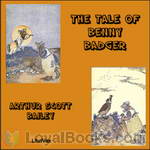 The Tale of Benny Badger
The Tale of Benny Badger
Mr. Bailey centered all his plots in the animal, bird and insect worlds, weaving natural history into the stories in a way that won educator’s approval without arousing the suspicions of his young readers. He made it a habit to never ‘write down’ to children and frequently used words beyond the average juvenile vocabulary, believing that youngsters respond to the stimulus of the unfamiliar.” | |
 The Tale of Master Meadow Mouse
The Tale of Master Meadow Mouse
This volume in the series, Sleepy-Time Tales, follows the adventures of Master Meadow Mouse as he moves his home to various (safer) places, and tells how he cleverly avoids creatures such as Fatty Coon, Mr. Crow, and Mr. Great Blue Heron, just to name a few. | |
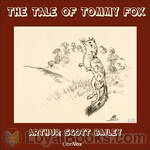 The Tale of Tommy Fox
The Tale of Tommy Fox
Bailey’s writing has been described thusly by the Newark Evening News: “Mr. Bailey centered all his plots in the animal, bird and insect worlds, weaving natural history into the stories in a way that won educator’s approval without arousing the suspicions of his young readers. He made it a habit to never ‘write down’ to children and frequently used words beyond the average juvenile vocabulary, believing that youngsters respond to the stimulus of the unfamiliar. (Wikipedia) | |
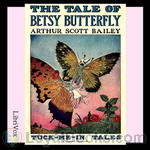 The Tale of Betsy Butterfly
The Tale of Betsy Butterfly
Arthur Scott Bailey (1877 – 1949) was the author of more than forty children’s books. “Mr. Bailey centered all his plots in the animal, bird and insect worlds, weaving natural history into the stories in a way that won educator’s approval without arousing the suspicions of his young readers. He made it a habit to never ‘write down’ to children and frequently used words beyond the average juvenile vocabulary, believing that youngsters respond to the stimulus of the unfamiliar.” (Wikipedia) | |
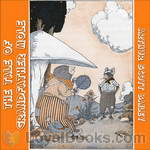 The Tale of Grandfather Mole
The Tale of Grandfather Mole
Arthur Scott Bailey (1877 – 1949) was the author of more than forty children’s books.Bailey’s writing has been described thusly by the Newark Evening News: “Mr. Bailey centered all his plots in the animal, bird and insect worlds, weaving natural history into the stories in a way that won educator’s approval without arousing the suspicions of his young readers. He made it a habit to never ‘write down’ to children and frequently used words beyond the average juvenile vocabulary, believing that youngsters respond to the stimulus of the unfamiliar.” | |